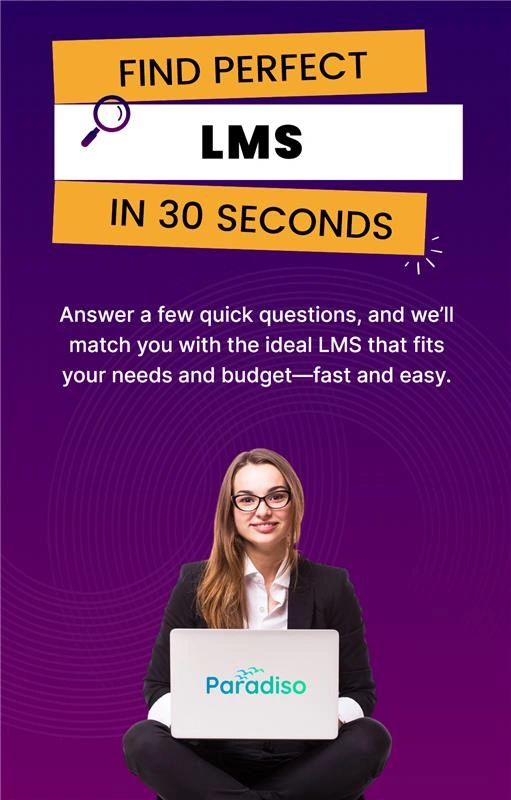Challenges Teachers Face When Managing Both Face-to-Face and Online Instruction
Navigating blended learning environments presents significant challenges for educators aiming to deliver effective instruction across both in-person and digital settings. Traditional teaching methods, primarily designed for physical classrooms, often fall short in meeting the unique demands of hybrid and online learning modalities. This calls for a reevaluation and adaptation of instructional strategies.
One of the biggest hurdles is maintaining student engagement and motivation in virtual environments. Unlike physical classrooms where teachers can read body language and foster spontaneous interactions, online platforms can cause feelings of isolation and reduce participation. A report by the U.S. Department of Education highlights that student engagement directly impacts learning outcomes, emphasizing the need for innovative strategies to boost involvement digitally (ED.gov, 2020).
Start Scaling Your L&D Today with Free Tools
Unlock the Potential of Free Tools to Revolutionize Your Learning Strategy!
Additionally, teachers must juggle different pedagogical approaches and technologies. Managing classroom management across both physical and virtual spaces entails adapting lesson plans, using various digital tools, and ensuring consistent student interactions. This often increases workload and leads to cognitive overload. Educational psychology research shows that switching between instructional formats elevates teacher stress levels, which can affect teaching effectiveness (Schaufeli & Bakker, 2004).
Assessing student performance in blended environments also poses significant challenges. Traditional assessments may not translate well online, complicating progress monitoring and immediate feedback. Teachers need to employ formative assessments tailored for digital platforms, all while maintaining academic integrity.
Moreover, ensuring equitable access to technology and reliable internet is an ongoing barrier. Many students face connectivity issues or lack appropriate devices, hindering seamless instruction delivery. According to Pew Research Center, approximately 15% of U.S. students lack consistent home internet access, underscoring the importance of bridging the digital divide (Pew Research Center, 2021).
In summary, managing blended learning environments requires educators to adapt to evolving technologies, address engagement issues, and support diverse learner needs. Recognizing these challenges is vital for developing effective support systems that empower teachers to succeed in hybrid education landscapes.
Streamlining Teaching Workflows and Enhancing Student Engagement with Free LMS Solutions
Integrating free Learning Management Systems (LMS) into educational settings offers a transformative approach to teaching and administrative management. These platforms enable educators to streamline workflows, foster higher engagement levels, and efficiently manage blended learning strategies—all without additional costs.
**Simplifying Teaching Workflows**
Free LMS options such as Moodle, Canvas, and Google Classroom feature user-friendly interfaces that simplify course creation, content sharing, and assessment management. Teachers can upload lecture materials, automate grading, and monitor student progress effortlessly. This reduces administrative burdens and allows educators to focus more on instructional quality and personalized support.
**Boosting Student Engagement**
Engagement is key to effective learning. Free LMS platforms incorporate interactive features like discussion forums, quizzes, multimedia content, and real-time feedback. Such tools make online education more dynamic and participatory, motivating students to actively involve themselves, collaborate with peers, and take ownership of their learning process.
**Facilitating Blended Learning**
These platforms make blended learning more accessible by enabling flexible scheduling, remote access to coursework, and synchronous/asynchronous interactions. This adaptability helps meet diverse learner needs and maintains consistent educational delivery, regardless of external circumstances.
**Achieving Effective Management**
Most free LMS solutions provide analytics and reporting tools that help teachers track engagement levels, identify students needing extra support, and refine teaching strategies. This data-driven approach enhances overall educational effectiveness and supports continuous improvement.
In conclusion, adopting free LMS solutions can optimize teaching workflows, increase student engagement through interactive tools, and manage blended learning environments effectively. This democratization of technology makes quality education more accessible and impactful for both educators and learners.
🚀 Ready to See Paradiso LMS in Action?
Let’s show you how Paradiso LMS can work for you.
Essential Tools and Functionalities for Seamless Blended Learning
Building an effective blended learning environment depends on a suite of essential tools that enable smooth integration of online and offline educational experiences. These functionalities not only improve student engagement but also streamline communication, content delivery, and assessment processes.
Content Management Systems (CMS)
A strong CMS acts as the core of blended learning. It allows educators to organize, deliver, and update educational materials easily. Modern CMS platforms support multimedia content—such as videos, interactive simulations, and PDFs—and facilitate structured course modules accessible anytime. This promotes personalized learning and ensures consistency across different formats.
Communication Channels
Effective communication is vital. Integrated tools like live chat, discussion forums, and video conferencing facilitate real-time interaction between teachers and students. These channels encourage clarity, peer collaboration, and community building, especially in virtual or hybrid classrooms. Sending targeted notifications and reminders keeps learners informed about deadlines and activities, maintaining momentum.
Assessment Analytics
Assessment analytics tools offer insights into learner performance and engagement. Features like quizzes, assignments, and surveys generate real-time data on individual and group progress. Advanced analytics help identify knowledge gaps and learning outcomes, allowing educators to make targeted adjustments and provide personalized support.
Additional Functionalities
Other supportive tools include gradebooks for transparent assessment tracking, gamification features to motivate learners, and integrations with third-party apps for enhanced content delivery. These functionalities create an engaging, manageable, and adaptive learning environment tailored to diverse needs.
Leveraging these essential tools ensures a seamless blended learning experience that is flexible, interactive, and focused on results—ultimately fostering higher engagement and improved educational outcomes.
Actionable Strategies for Transitioning to Blended Learning
Transitioning to blended learning transforms traditional classrooms into dynamic, flexible environments that boost engagement and personalize education. To achieve a smooth and effective shift, educators should adopt strategic course design techniques and approaches that cater to diverse student needs.
1. Redesign Course Content for Flexibility and Accessibility
The process begins with thoughtful redesign of materials. Incorporate modular content such as recorded lectures, interactive multimedia, and downloadable resources that students can access asynchronously. Ensure accessibility by following standards like WCAG, including clear language, transcripts, and captions, so all students, including those with disabilities, can participate fully.
2. Incorporate Active Learning Techniques
Passive content delivery should evolve into active learning. Use case discussions, problem-solving tasks, and peer collaboration to deepen understanding. Employ tools like discussion forums, quizzes, and virtual breakout rooms to promote active participation online and in person.
3. Utilize Learning Management Systems (LMS) Effectively
A reliable LMS forms the backbone. Organize content logically, embed assessments, and provide prompt feedback. Use analytics to monitor student progress and engagement, allowing proactive support for those at risk. Clear communication and regular updates within the LMS facilitate smooth interactions.
4. Differentiate Instruction to Meet Diverse Needs
Address learner diversity through formative assessments that reveal preferences and challenges. Offer multiple avenues for assignments—visual, auditory, kinesthetic—and flexible deadlines when possible. Personalization tools within LMS help tailor experiences based on individual data.
5. Foster a Supportive Learning Environment
Build an inclusive atmosphere that encourages participation and values diversity. Set clear expectations, provide scaffolding, and hold regular check-ins or virtual office hours. Utilize student feedback to continuously improve the blended learning experience.
6. Provide Professional Development and Technical Support for Educators
Successful implementation depends on instruction. Offer ongoing training on digital pedagogy, tech tools, and inclusive practices. Ensure robust technical support to assist educators swiftly, maintaining instructional continuity.
7. Pilot and Iterate
Begin with pilot programs to test new methods and gather insights. Use data to refine course design and delivery. Gradually expand successful practices, fostering a culture of continuous innovation.
Overall, deliberate course design and the right digital tools enable educators to manage diverse student needs effectively. Solutions like Paradiso LMS support adaptive content, analytics, and seamless integration, making the transition to blended learning smoother and sustainable.
Simplify Blended Learning with Free LMS Today.
Streamline Your Teaching—Get Started with Free LMS!
Enhancing Education with Paradiso LMS: User-Friendly Features, Seamless Integrations, and Dedicated Support
In today’s rapidly evolving educational landscape, leveraging technology that simplifies management while enriching teaching is crucial. Paradiso LMS stands out as an all-in-one learning management system, designed to help educators reduce workload, streamline processes, and deliver outstanding learning experiences. Its intuitive design, broad integrations, and dedicated support make it an invaluable asset for modern educators seeking efficiency and impact.
Intuitive and User-Friendly Interface
Paradiso LMS boasts a clean, easy-to-navigate interface suitable for both teachers and students. Teachers can quickly create, organize, and share content without extensive technical expertise. Features like drag-and-drop course builders and customizable dashboards enhance usability, allowing educators to focus on teaching rather than fighting with the platform.
Advanced Integrations for Enhanced Functionality
The platform seamlessly connects with popular third-party tools such as Zoom, Salesforce, and Google Workspace. These integrations facilitate live video sessions, data management, and collaborative work, reducing the need for multiple platforms. This interconnected environment promotes real-time engagement and streamlines administrative workflows.
Automation and Workflow Optimization
Paradiso LMS offers automation capabilities, including automated enrollment, progress tracking, and certificate issuance. Such features decrease manual effort, freeing educators to focus on instruction. Automated alerts and reminders help keep students motivated and on schedule, supporting higher course completion rates.
Dedicated Support and Training
Transitioning to a new LMS can be challenging. Paradiso’s support team provides onboarding assistance, training webinars, and ongoing technical help. This dedicated support ensures educators can maximize the platform’s features with confidence and ease.
Improving Teaching Outcomes and Reducing Workload
By combining user-friendly design with automation and integrations, Paradiso LMS empowers instructors to deliver engaging, personalized learning experiences while minimizing administrative tasks. This results in more vibrant teaching environments and better learning outcomes.
To sum up, Paradiso LMS offers a comprehensive, easy-to-use solution for modern education needs. It helps institutions and educators enhance teaching effectiveness, reduce workload, and stay ahead in today’s digital learning arena.














